9 Substitutes for Rosemary
When you buy through our links, The Breslin may earn an affiliate commission. Learn more
How to make your perfect dishes without rosemary in a couple of minutes? The best way is to have some rosemary substitutes in your kitchen.
You know that rosemary is an attractive and useful herb in cooking. As it brings many outstanding benefits, rosemary can increase the aroma of food and provide potential health advantages to you.
It has antioxidant, anti-inflammatory, and antimicrobial compounds that help me to improve my health as well. And the moment that I add rosemary to my dishes gives me a strong impression due to its aroma and flavor.
However, it is a big problem if your rosemary runs out suddenly, right? Do not worry. I’m here to help you escape from these situations. And all you need is included in this post.
Here we go!
Rosemary Substitutes Comparison Chart
To help you know clearly about rosemary substitutes, I will attach a table list below. Some health-related information will be mentioned here.
This is a precise section where I will sum up all necessary information and add some incredible details of rosemary substitutes, including nutrition and fats. Take a closer look and make your own decision.
What Is Rosemary?
To begin with, some basic information about rosemary is mentioned below. Keep reading to know what necessary details relate to rosemary.
Rosemary is an evergreen shrub that belongs to the mint family. It is used as an enhancer flavor. It is also known by another name Salvia Rosmarinus.
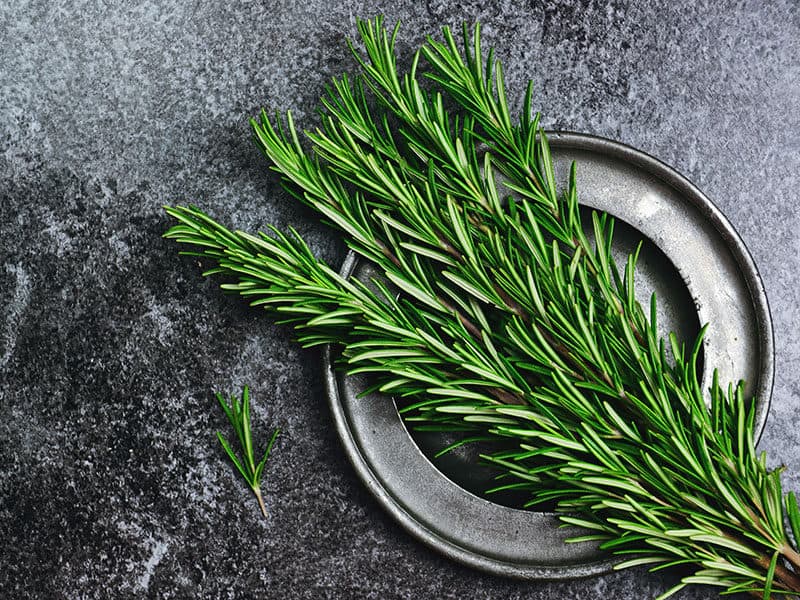
You can see rosemary with fragrant, evergreen, needle-like leaves and some main types of colors, including pink, white, purple, and blue flowers.

Besides, rosemary has come from the Mediterranean and Asia, and it starts to blossom in warm climates. It can grow without water for a long time, even in the period of droughts. So, rosemary is also used to decorate the house.
What Food Can Rosemary Be Used With?
Thanks to rosemary’s flexibility, many gourmet foods have been made. But do you know what food rosemary can be used with?
Your food would be more delicious if rosemary is added. Here is the common recipe of side dishes you can apply to your daily meals.
- Mix rosemary into softened butter and spread on your bread.
- Mix rosemary with yogurt and spread it on your sandwich.
- Add rosemary into your sauce.
- Add rosemary into your beefsteak, fish, fried chicken, and pasta.
- Add rosemary with roasted veggies.
- Mix rosemary with special veggies such as potatoes, cauliflowers, and kales.
What Does Rosemary Taste Like?
Why does rosemary can be used widely in food? Does it have special tastes?
Keep reading to fulfill your interests.
You are becoming health-conscious and probably want to know why rosemary appears very often. One of the main reasons is its taste. So, does it taste good?
The answer is that rosemary has a stunning flavor. It is quite spicy and warm. In addition, adding rosemary to foods will bring mild savory flavors and distinctive aromatic spices.
Besides, the flavor of rosemary also depends on cooking time. The longer rosemary is cooked in soups, the stronger the flavor becomes. It would be better to avoid drying rosemary for a long time.
On the other hand, if you want to retain the rosemary’s flavor, keep it raw and taste it within a couple of minutes after cooking.
How Many Types Of Rosemary Are There?
Unlike other herbs, rosemary is divided into two types, fresh and dried. In this part, I will help you know what types of rosemary there are and their differences.
If you think fresh rosemary is always the best choice in cooking, you must have missed a distinct flavor using dried rosemary.
Dried rosemary is more concentrated and distinctive, and it can stand for a long time while cooking. And there are several varieties of dried ones, such as whole needles, cracked needles, and powder.
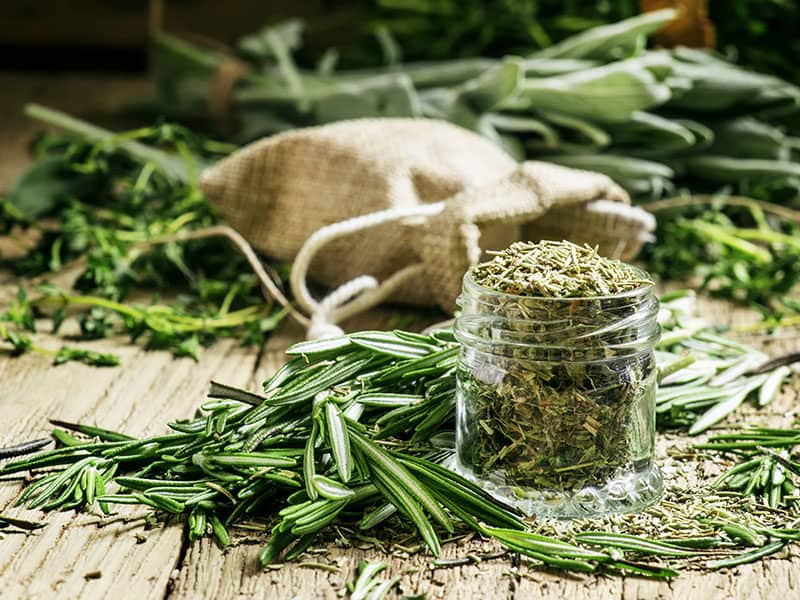
Besides, another difference is when to use fresh and dried rosemary. Let’s start to explore.
When To Use Fresh Rosemary?
Fresh rosemary is used in most dishes to enhance the flavor. But there are some exceptions that you should know. Let’s read together and get the information when fresh rosemary is consumed.
Fresh rosemary is used to combine with a raw dish, such as a mixture of salad, dressing, or pasta. In addition, using uncooked fresh rosemary will make your dishes bright, fresh, and a dusty taste.

Sometimes, fresh rosemary will lose a part of its distinctive flavor if it is dried. So you need to be careful while cooking with this fresh rosemary. If you want to keep the rosemary scent, it’s best to taste it raw or after a few minutes of cooking.
When To Use Dried Rosemary?
In terms of dried rosemary, it’s added in other dishes compared to the fresh version. It’s time to find out when dried rosemary is used.
If you want to make soup, sauce, and stew, dried rosemary will add a nice flavor to your meal. After cooking, spread dried rosemary for a few minutes to create a special aroma, though it does not still have any nutritional substances.
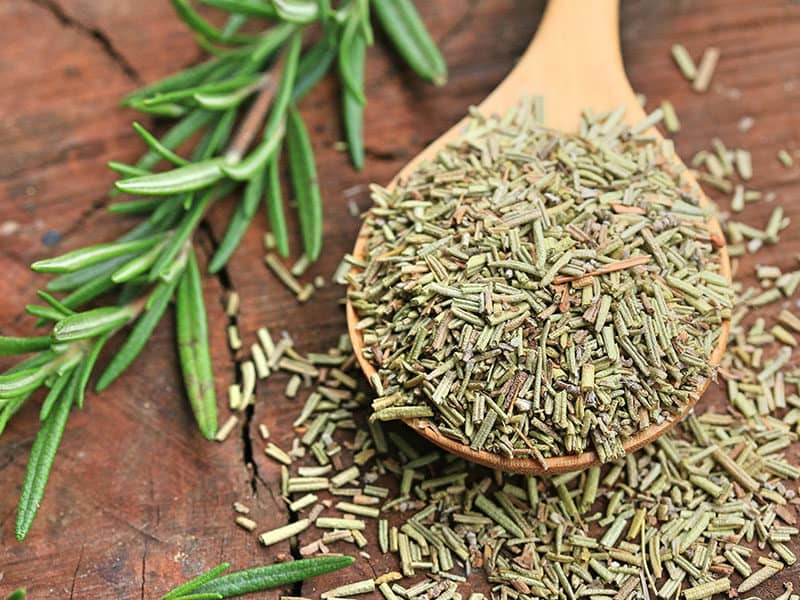
In some special cases, dried rosemary is recommended to save in the pantry or airtight bags. This helps these herbs retain better flavors.
Fresh Rosemary Substitutes
In this part, I will mention some kinds of fresh rosemary substitutions. It would be helpful if you use suitable substitute materials for dishes.
Can Dried Rosemary Substitute For Fresh Rosemary?
Have you ever thought about replacing fresh rosemary with dried ones or vice versa? This part will give you a useful tip to be more flexible in cooking.
One of the main advantages of using dried rosemary is a longer expiration date. If dried rosemary is kept in a suitable environment or the pantry, it will last more than 6 months.
So, dried rosemary is an ideal choice replacement for the fresh one. Although dried rosemary is likely to lose its efficacy and potency, it sometimes brings special flavors and distinct smells.
Moreover, you can rub dried rosemary or grind it before adding it to the dish. This process will discharge the flavor.
And what measure of dried rosemary is suitable? In case you lack fresh rosemary, you can apply a common recipe that is 1 tablespoon chopped fresh with 1 teaspoon dried.
I also highly recommend you use dried rosemary for sauces, stew, or soups. Since there is also no difference between dried and fresh rosemary in these dishes, both of them are easy to change.
Other Substitutions For Fresh Rosemary
Besides dried versions, other substitutions are easy to replace fresh rosemary. You will find out your answers in the following part.
Oregano
If you do not have available fresh rosemary in the kitchen, oregano can be a perfect replacement. So, what is oregano, and can it be replaced with fresh rosemary? Keep reading to satisfy your curiosity.
As you know, oregano belongs to the Lamiaceae family. It is a product of oregano plants whose leaves have a strong and pungent aroma. Sometimes, it tastes a little bit bitter.
Oregano also has two types, including fresh and dried versions. Both of them can be used without many differences, though dried oregano is easy to find in the market.
In addition, oregano is considered a perfect substitution for fresh rosemary due to its special features and similar flavors. Hence, you can use the same amount of oregano as that of fresh rosemary in your recipes.

More importantly, oregano is used in pizzas and pasta sauce instead of fresh rosemary. Besides, it can be added to other savory dishes such as chicken, seafood, hamburgers, and beans to robust the flavor and decorate as well.
Basil
Basil will make your dishes more special compared to fresh rosemary. Are you eager to find out the reasons?
Basil is another herb of the mint family which is quite similar to rosemary. It is considered an ideal substitution for fresh rosemary based on its popularity. You can find basil in every corner of the market.
However, it has many types of flavors that depend on where basil comes from. It has a fragrant, sweet smell and peppery taste. Both dried and fresh basil are preferable in cooking. Besides, you should add it at the end of cooking to have an intense flavor.
With ½ cup fresh rosemary, you can use ¼ cup fresh basil. This will bring your dishes specific flavors. It is also replaced with rosemary in tomato-based dishes, pasta, and some sauces as well.
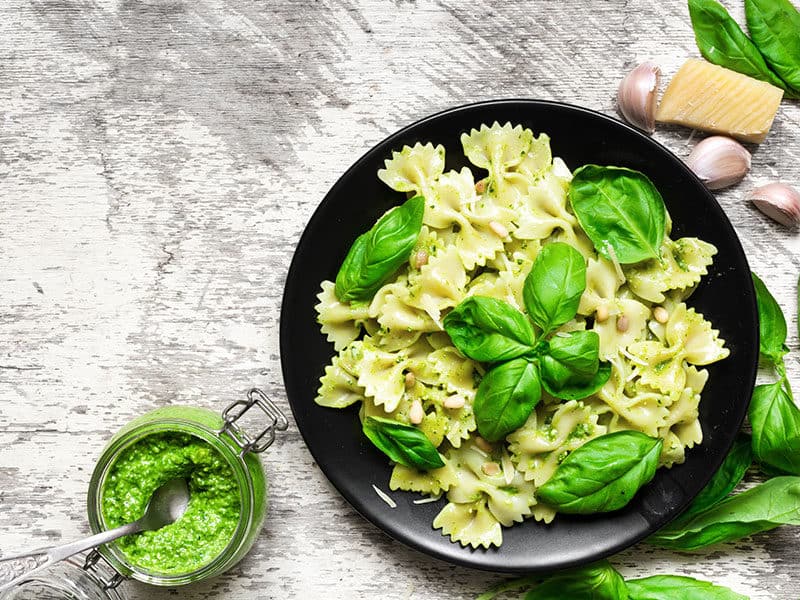
By the way, you should think carefully when using basil. Sometimes, it may change the original flavors. Make sure you have done some experiments before.
Dried Rosemary Substitutes
In addition to using dried rosemary, you may have a lot of choices for replacements. Why don’t you try to take a glance at the succeeding substitutions?
In this part, you will have five alternatives for dried rosemary. Keep reading until you opt for the better one.
Sage
You may wonder what the best way to replace dried rosemary is. One of my favorite substitutes is sage.
Whenever you do not have dried rosemary available, sage will be the best option. Why does sage become popular for dried rosemary replacement?
Similar to rosemary, sage is a “member” of the mint family. It has spear-shaped, green leaves with thin woody thin stems. Besides, it is used to cook, stew, and even marinate in place of dried rosemary.
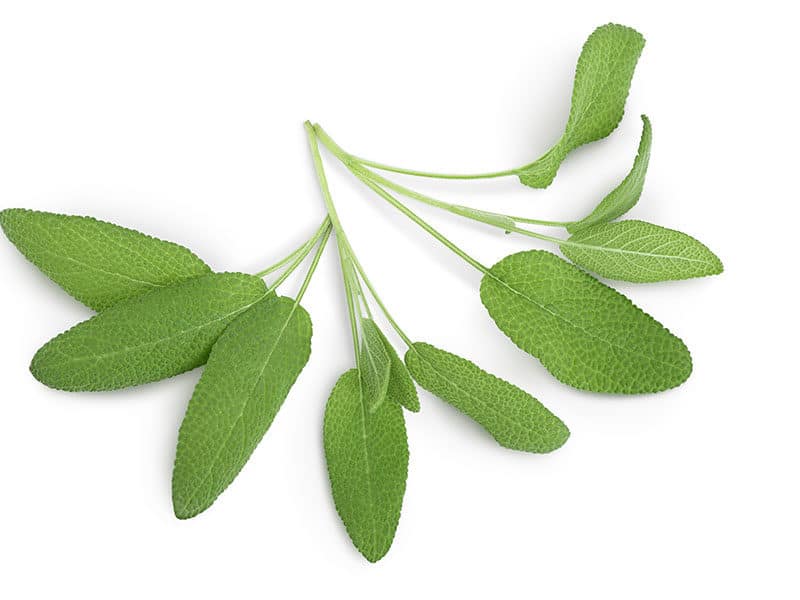
Sage is well-known due to its taste, pine-like, minty, and a little spicy. In some dishes, there is no difference between sage and dried rosemary. Hence, you can add it to a variety of dishes.
Although the taste of sage is not as strong as rosemary, it’s suitable to replace rosemary in recipes such as pork, salads, several veggies, sauces, and soups. And the quality measurement is ½ teaspoon dried sage for 2 tablespoons dried rosemary.
Sometimes, you can escape from ordinary tastes by changing the amount of dried sage for new experiences.
Lavender
Although rosemary can be found in some grocery stores, you sometimes have difficulty running out of it while cooking. Are there any other alternatives?
With a strong and distinctive flavor, rosemary leaves a deep impression on dishes. But you cannot imagine that lavender can do the same. Let’s read to know why lavender can replace rosemary.
Some types of lavender have a similar appearance to rosemary. Both of them might have needle-like leaves with green color, though lavender’s color is lighter.
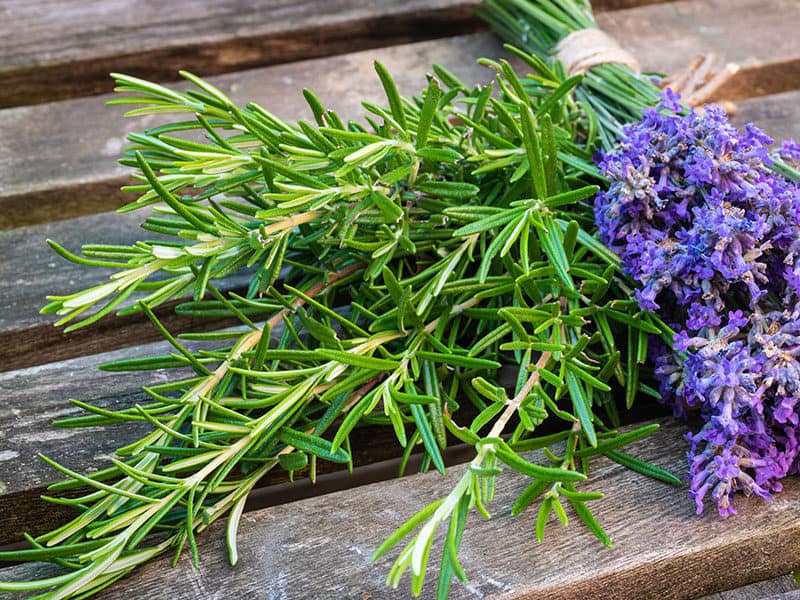
While rosemary has a pungent and sweet taste, lavender’s flavor is a combination of light floral and woody and fruity subtleness. It is less pungent, less sweet, but not bitter as all.
Besides, with its distinctive flavor, lavender is also injected into the flesh of meats, lamb, and chicken to replace rosemary. It is also used in dessert dishes, especially cakes.
And due to the strong scent of rosemary, lavender is recommended to add more than ordinary recipes with rosemary to balance the flavor. It’s better to use ½ teaspoon dried rosemary for 1 teaspoon of lavender.
Marjoram
Out of rosemary and wondering if there is any substitution that you can use in your kitchen? Why don’t you try to use marjoram instead?
Marjoram has a similar appearance to oregano, a woody stem, oval, and green leaves, though marjoram’s leaves are smaller. You can see it in some vegetarian or mushroom diets due to its delicious taste, which is quite similar to dried rosemary.
Since marjoram has a distinct flavor, it can help you create new cooking tastes such as mild, aromatic, minty, grassy, gentle, and even taste like thyme. And, it should be added last to retain its spiciness.
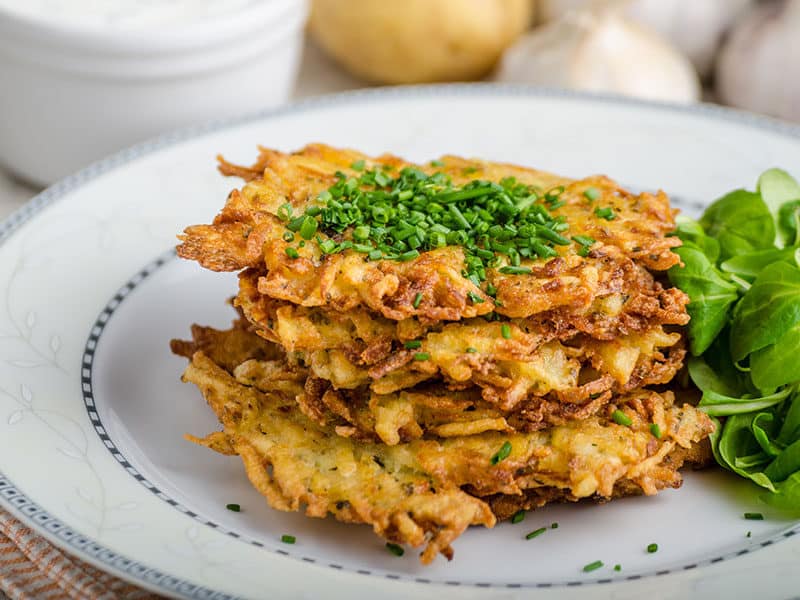
Marjoram can be used in cooking soups, stews, and sauces instead of rosemary. It is also added to the salad to make a better mixture. More importantly, you can add it to some common dishes, veggies, tomato-based dishes, pizza, and poultry seasoning.
Besides, you need to consider replacing it with a moderate level due to its strong scent and a little bitterness. Both dried and fresh marjoram can be used in this situation.
Caraway Seed
One of the most brilliant ways to replace dried rosemary is caraway seed. Keep reading to know how caraway seed can be added to dishes instead of dried rosemary.
Caraway seed works great for dried rosemary substitution. Unlike other ingredients, it belongs to the carrot family. It is known as a brown, crescent-shaped seed that is more common to flavor than its leaves and roots.
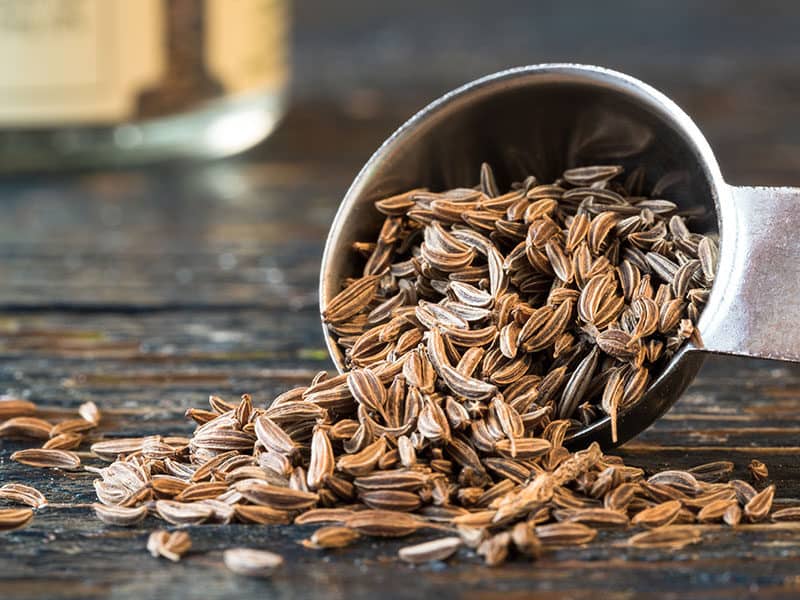
Although caraway seed comes from a different group, it also has similar flavors to rosemary, such as peppery, earthy, pungent, and a little bitter. It is also recommended to add at the end of the cooking process to retain its aroma.
Caraway seed is not added to desserts, pudding, salads, but it also appears in some common recipes, including veggies, soups, sausages, and baked items.
Due to its pungency, caraway seed is advised to add with a less amount compared to rosemary; otherwise, it may break your recipes. With ½ teaspoon, ground caraway seeds for 1 teaspoon dried rosemary. Sometimes, you can apply ½ tsp caraway seeds for the same rate of dried rosemary to enhance the flavor.
Bay Leaf
Another remarkable substitution for dried rosemary is a bay leaf. What measurement of dried rosemary can be replaced by bay leaf? Keep moving!
Bay leaf is quite well-known in culinary recipes based on its variety. It has three standard forms, fresh, dried, and ground. Besides, it has dark-green color, thick and leathery leaves.
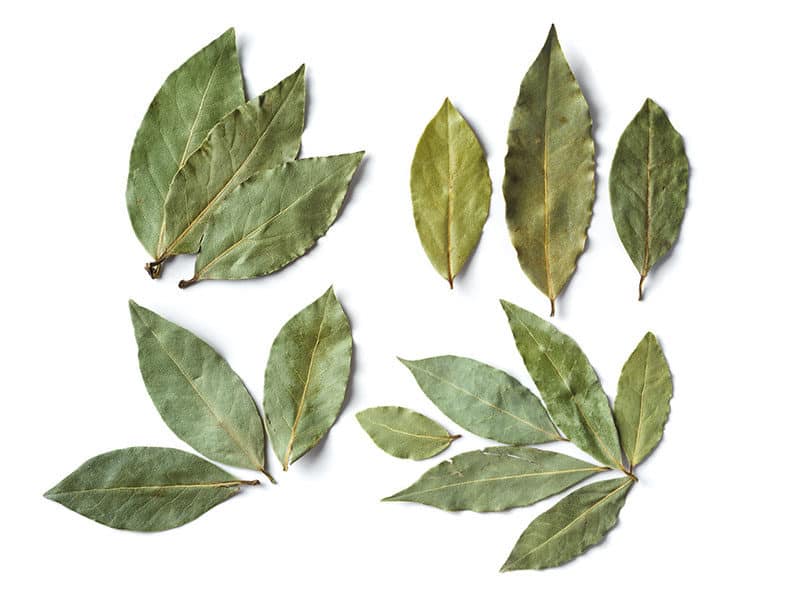
Bay leaves are also easy to find in a variety of countries, so they can have a different flavor and aroma depending on each area. Although they are secondary in cooking, bay leaves are recommended to add to dishes to enhance flavor and create a depth of smell.
Besides, bay leaves are not easy to add directly to the dishes, they are usually used in soups, stews, or liquid-related cooking. Some common meals that you can mix with bay leaves are roasted chicken with ground bay leaves, bean and bacon soups, meat, a mixture of lamb, peppermint, and thyme.
And the recipe is ¼ teaspoon dried rosemary for the same amount of crushed bay leaves. You can change this measurement for new tastes as well.
Other Rosemary Alternatives
You may have many choices for rosemary replacements, but there are some different alternatives, and you deserve to know them.
In this part, I will give you 2 bonuses for both dried and fresh rosemary. So, you can try to do experiments with thyme and tarragon if your rosemary is not available.
Thyme
Rosemary is hard to replace. But thyme is an ideal option for you if your rosemary runs out. Let’s look closer at what thyme is and how it can replace rosemary.
Thyme is considered the best substitution for rosemary due to its appearance and flavor. Thymes have small and rounded leaves while they are stiff and needle-like in rosemary sprigs.
Although both thyme and rosemary belong to the mint family, their flavors are different. Thyme is usually combined with many other herbs due to its subtle flavor. It is gentler and lighter.

Besides, you can buy thyme easily in every store because of its popularity. And, it’s quite easy to cook soups, stews, or chilly instead of rosemary. It’s also commonly used for seasoning in meats, fish, and veggies, making thyme a versatile herb.
Lastly, it should be better to use more thyme than what recipes you often use with rosemary.
Tarragon
In some emergency cases, your rosemary is not available to use. So, if you do not have rosemary on your hands, try to replace it with tarragon.
If you lack special spices, tarragon will help you do that. Tarragon has a mild, anise-like, and citrus flavor. It is added to create pepperiness and perfumed intensity to a dish, though it is not as popular as rosemary.
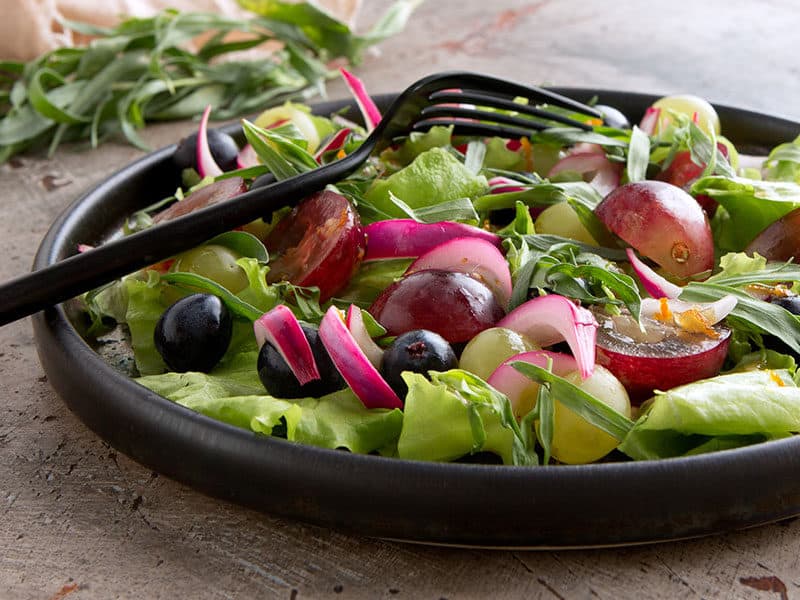
It can replace rosemary in some dishes such as meats, fish, eggs, poultry, etc. Specifically, dried tarragon is similar to dried rosemary. You can rub lightly to enhance the distinctive flavor.
Soups, stews, and other liquid-related dishes can be used with tarragon. And it will be more delicious if you add more cheese to it.
The recipe calls for 1 teaspoon of dried tarragon to replace 2 tablespoons of fresh rosemary. Or a half amount of fresh tarragon for a cup of rosemary.
How To Store Rosemary
Storing rosemary is very important to keep its flavor and usefulness. Rosemary will always be available whenever you need it. This will help you to consume time in cooking as well.
Besides using some alternatives, consuming rosemary is always highly recommended due to its characteristics. So, if you do not have a lot of fresh leftover rosemary and dried one, try to keep it correctly for the next time.
Fresh rosemary is better to leave in a cool and dark place. Because fresh herbs can be used from 10- 14 days, you can keep them from the air and put them in the fridge.
In addition, you can wrap the rosemary sprigs with a damp paper towel before storing them to keep them fresher.
Dried rosemary has a longer expiration date. It usually lasts from 6-12 months if it is preserved in an airtight container. However, you should use it as soon as possible to keep its freshness and flavor.
FAQs
Because you may spend time cooking with rosemary and finding other rosemary substitutes in some emergency cases, you should be aware of as many rosemary-related alternatives as possible.
What Is Your Choice?
This part may attract your attention because you can share your ideas and tell me what experience you have had. Do not miss it.
From my perspective, the best substitute for rosemary is the dried version. Both fresh rosemary and its replacements are probably necessary for your kitchen. Nevertheless, you need to prepare a range of alternatives in order not to interrupt your cooking process.
If there is not any dried rosemary, you can use any aforementioned herbs. Do not lose your cooking passion due to missing ingredients.
By the way, what is your opinion? After reading all my suggestions, you may have your own substitution. Can you share with me what types of material you will use? Have you ever tried to change the measurements? And how about your performance after that?
I am always looking forward to hearing from you. If you have any questions, do not hesitate to leave a comment.

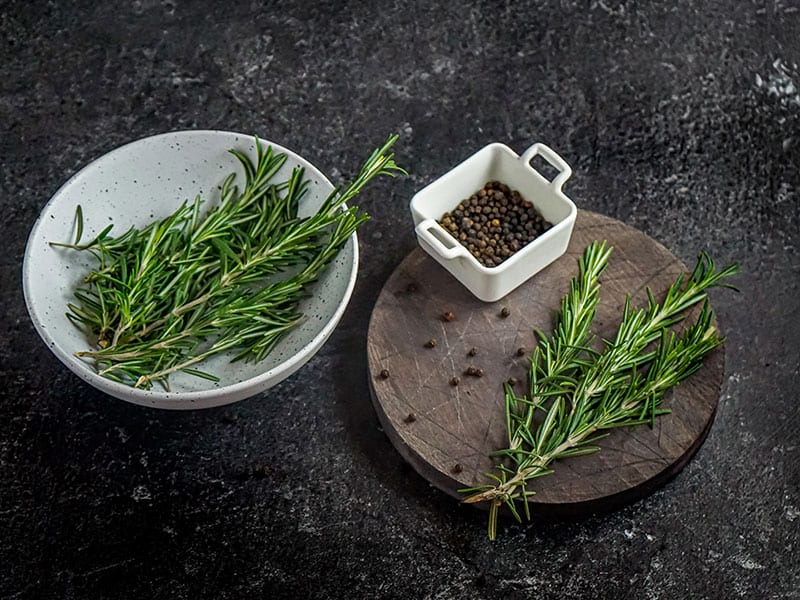
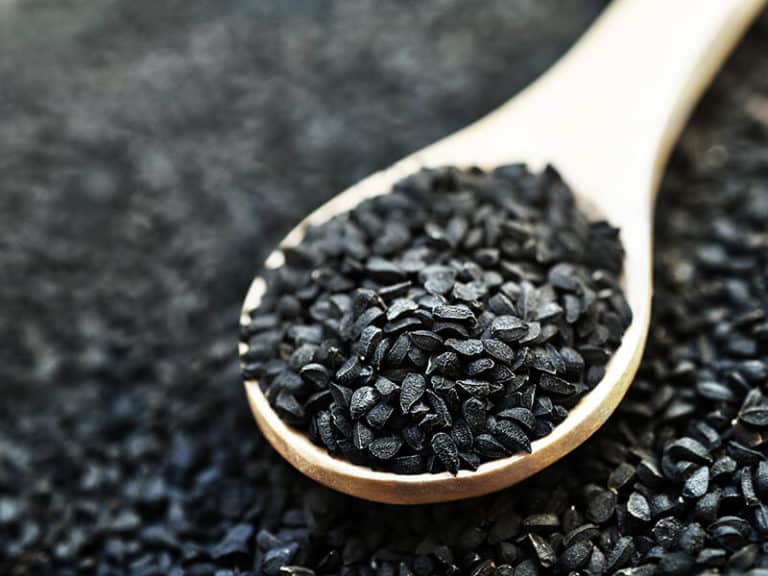
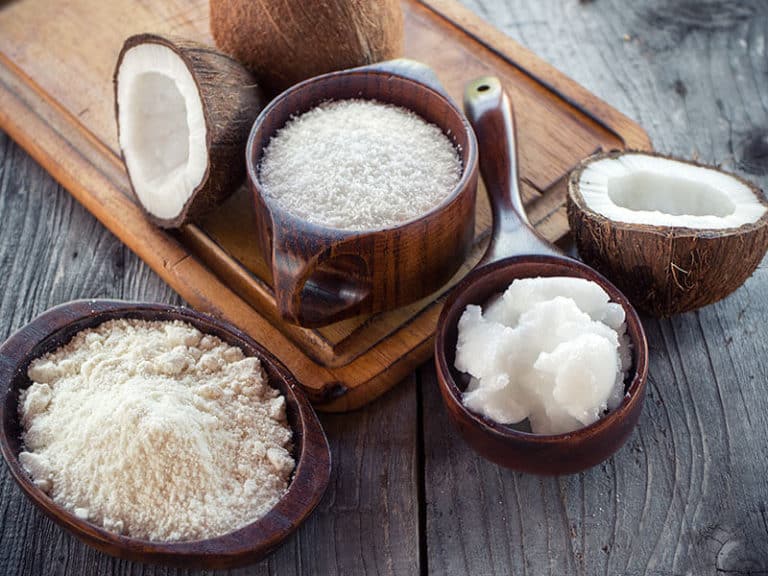
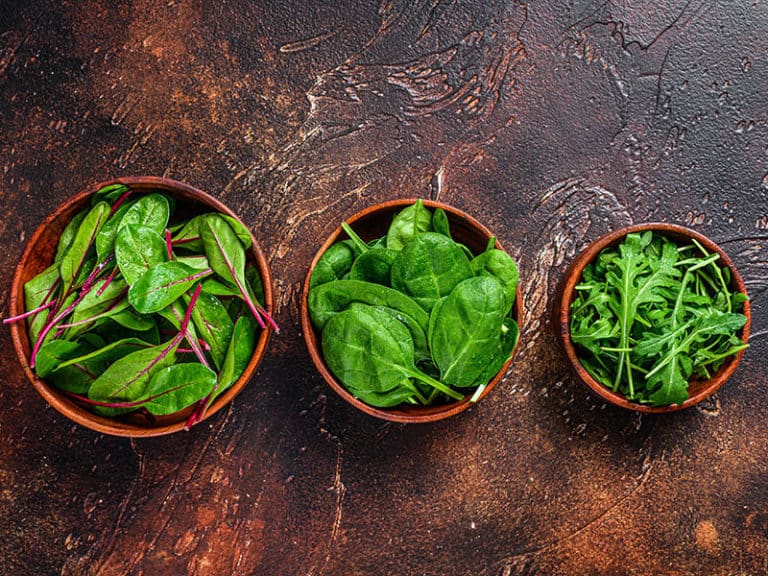
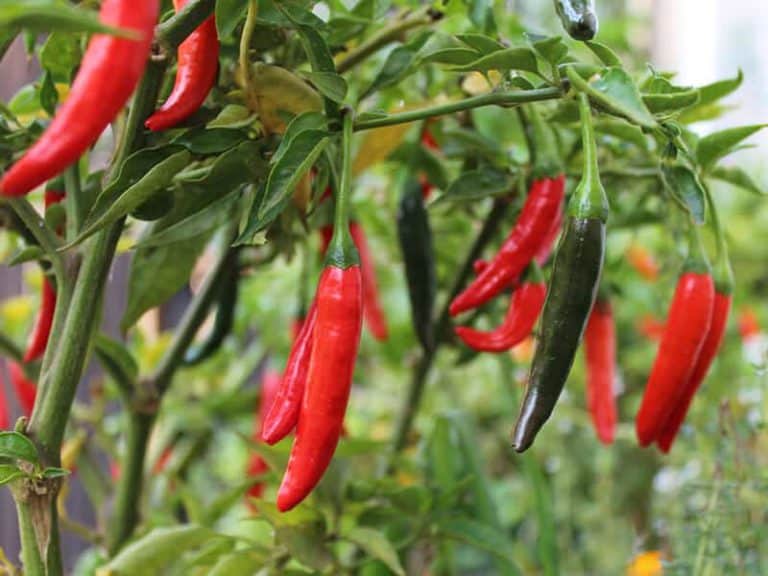

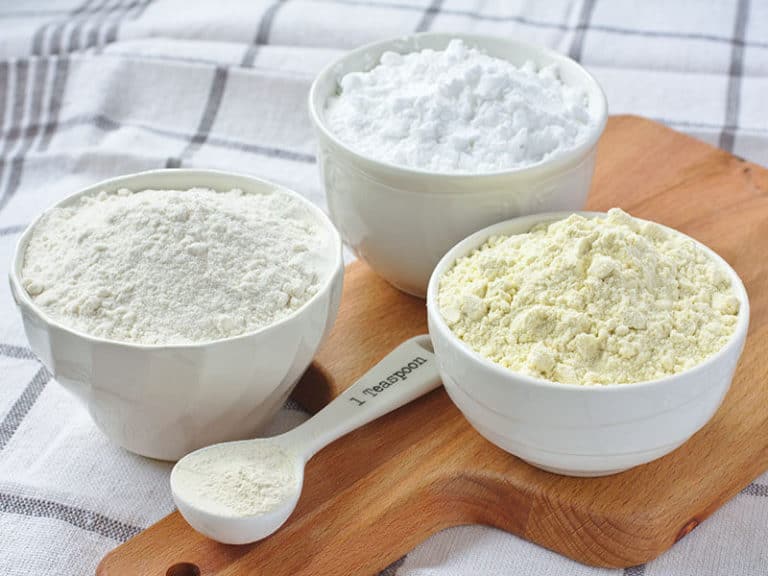
Amanda Collins
Founder and Senior Culinary Editor
Expertise
Culinary Arts and Management, Food Journalism and Critique, Recipe Development and Testing, Global Culinary Traditions, Sustainable Food Practices
Education
Institute of Culinary Education (ICE), New York, NY
Program: Diploma in Culinary Arts
Focus: Intensive hands-on training in culinary techniques, recipe development, and kitchen management, preparing students for professional roles in the culinary industry.
Monroe College, New Rochelle, NY
Program: Associate in Applied Science in Culinary Arts
Focus: Practical culinary skills, including cooking techniques, menu planning, and kitchen operations, with an emphasis on hands-on experience and industry standards.
Amanda Collins is a seasoned chef and food editor with a deep love for global flavors. Trained at the Institute of Culinary Education and Monroe College, and with over 15 years in the culinary field, Amanda has refined her skills in kitchens worldwide. Her background in food studies gives her a unique ability to share both recipes and the cultural stories that shape them.
As senior culinary editor at thebreslin.com, Amanda’s work brings authentic dishes to life, inviting readers to explore new flavors and techniques from around the globe. Her approachable style makes it easy for anyone to bring a bit of the world’s cuisine into their kitchen.